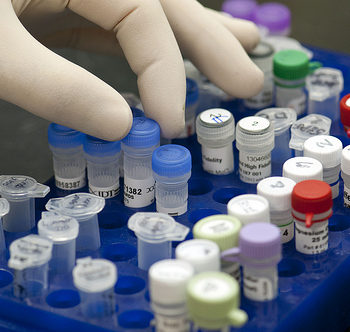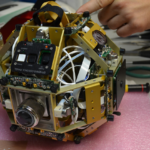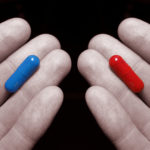Just three years after finishing her Ph.D. program, Liz Nolan was appointed as an Assistant Professor in the Department of Chemistry at MIT. She manages a lab of twelve researchers working to understand the competition for resources that happens inside our bodies when we get sick. Footnote spoke with Nolan about her research, collaboration across disciplines, and ‘eureka moments’.
Can you provide an explanation of your research for the non-scientists out there?
We’re interested in the host-pathogen interaction, and in particular the role of metal ions in this interaction. So, we’re all familiar with bacterial infection and getting sick, and in order for these microbial pathogens to colonize they need essential nutrients, including metal ions.(a) All organisms have a lot of machinery to transport and store these metal ions, and so we look at that machinery from a molecular perspective, at the level of atoms and molecules. We also look more broadly at the tug-of-war between the bacterial pathogen and the host for the acquisition of these metals.
One way in which the host attempts to prevent microbial colonization is to block metal-ion acquisition by the invading pathogen. To do so, the host synthesizes and secretes various polypeptides that have the capacity to sequester metal ions and thereby limit the availability of these essential nutrients.(b) In essence, the pathogen is starved. Understanding this type of host response to infection may provide new approaches for antibiotic development.
What is the ultimate goal of your research? What successes would you like to see five or ten years down the line?
In the long-term it is certainly possible that our work will impact the development of new therapies, or new iterations on current therapies, so we’re interested in that. But our questions are also quite fundamental in terms of using the tools of chemistry to understand the biological system and providing a molecular-level depiction of a working model. We’d like to understand the fundamental molecular mechanisms of some of the host-response proteins we’re currently investigating. And that knowledge is certainly necessary to improve antibiotics and other treatments.
The idea of a ‘eureka’ moment is often applied to scientific discovery. What’s the last big eureka moment you had?
I think that eureka moments are when you have a really exciting result – even though you may or may not understand what that result actually means yet – or when you find an essential piece to a complex puzzle that provides new understanding.(c) One I experienced recently was in an area we’re trying to understand about the mechanisms of certain naturally occurring antimicrobial peptides, and through a scanning approach we have some very interesting leads. In another direction, we’re trying to do some work that will allow us to target molecules in a certain subspecies of bacteria, and we have some very exciting results there as well.
Your work blends knowledge and techniques from several scientific disciplines, and you collaborate with specialists from many fields.(d) Why do you find it important to do multidisciplinary research?
I think it’s important to find collaborators who are dedicated to similar questions and problems but have a complementary skill-set. People in my group have different backgrounds depending on their major or their personal interests or what they did as a Ph.D. student. We also seek out external collaborators with complementary backgrounds in order to get the full perspective on the system. For example, we’re interested in this host-pathogen interaction, so we’re very interested in the biology, but we’re chemists and don’t have the expertise on animal-model studies, the medical perspective, all of that. And, on the other hand, there are areas of chemistry where we need expertise, so we seek outside collaborators there.
Sometimes partnerships can even happen by accident. For one collaboration, it just happened that I was at a meeting and this collaborator-to-be was at the meeting, and we had all these overlapping interests. She’s a physician and a microbiologist and I’m a chemist, so that was serendipitous and just terrific.
Is there a bit of research over the past six months or year that you think should be on the mainstream radar but isn’t?
It’s hard to assess what the general public actually knows and doesn’t know when it comes to the latest scientific research. Related to my field, broadly, I think that making the public more aware of the roles of metals in biology, which affect human health and disease, is important. It’s about more than just taking your iron supplement.
When was the last time you read about a new piece of research that made you think, “Wow, that’s really important”?
Probably last night. Haha, that long ago! A study in Science about aspects of outer-membrane stress response in e coli.
Sidenotes
- (a) Over 30% of proteins require metal ions to function properly.
- (b) The metal ions manganese, iron, and zinc are of particular importance during infection.
- (c) The word eureka comes from the Greek heúrēka, which means “I found it.” Its use is attributed to the ancient Greek thinker Archimedes.
- (d) Dr. Nolan’s research draws on approaches from inorganic and organic chemistry, biochemistry, enzymology, and cell biology.





